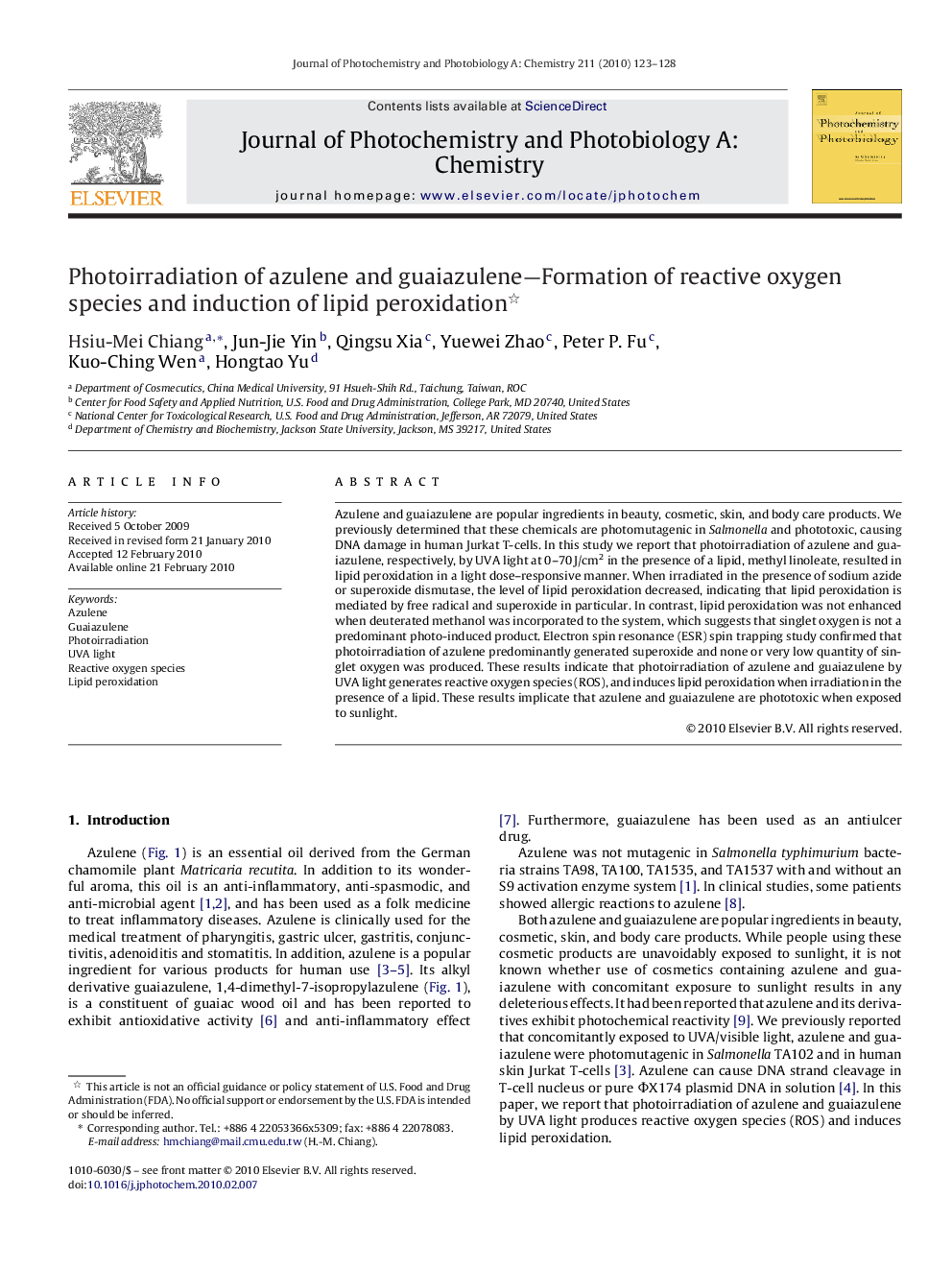| Article ID | Journal | Published Year | Pages | File Type |
|---|---|---|---|---|
| 27673 | Journal of Photochemistry and Photobiology A: Chemistry | 2010 | 6 Pages |
Azulene and guaiazulene are popular ingredients in beauty, cosmetic, skin, and body care products. We previously determined that these chemicals are photomutagenic in Salmonella and phototoxic, causing DNA damage in human Jurkat T-cells. In this study we report that photoirradiation of azulene and guaiazulene, respectively, by UVA light at 0–70 J/cm2 in the presence of a lipid, methyl linoleate, resulted in lipid peroxidation in a light dose–responsive manner. When irradiated in the presence of sodium azide or superoxide dismutase, the level of lipid peroxidation decreased, indicating that lipid peroxidation is mediated by free radical and superoxide in particular. In contrast, lipid peroxidation was not enhanced when deuterated methanol was incorporated to the system, which suggests that singlet oxygen is not a predominant photo-induced product. Electron spin resonance (ESR) spin trapping study confirmed that photoirradiation of azulene predominantly generated superoxide and none or very low quantity of singlet oxygen was produced. These results indicate that photoirradiation of azulene and guaiazulene by UVA light generates reactive oxygen species (ROS), and induces lipid peroxidation when irradiation in the presence of a lipid. These results implicate that azulene and guaiazulene are phototoxic when exposed to sunlight.
